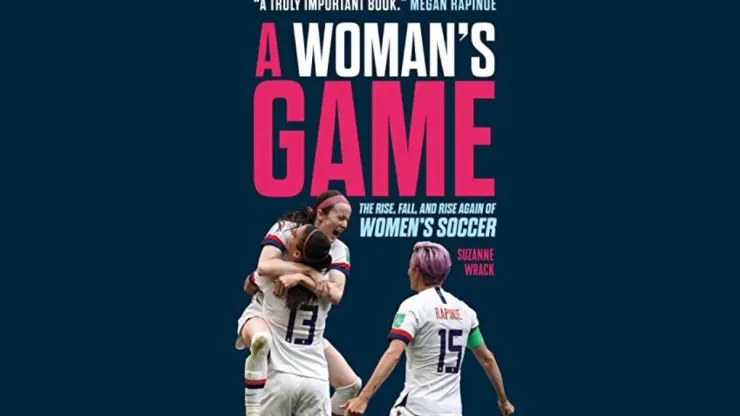Fairly or unfairly, women’s soccer is about more than just the game. For decades, the sport has been tied into larger cultural issues around women’s rights and equity. Whether it is the immediate ask for comments from women’s soccer players after the Supreme Court’s Dobbs decision, or the international interest in the US Women’s National Team’s lawsuit against U.S. Soccer, women’s soccer around the world is seen as a visible sign of the progress (or lack thereof) for women. In 2022, with the world rapidly changing in myriad ways, the sport itself mirrors the disruption and promise society holds.
I can be accused of overstating the role of the game but this is a similar take to the one Suzanne Wrack takes in her new book A Woman’s Game: The Rise, Fall, and Rise Again of Women’s Soccer. The Guardian writer takes on the task of writing a review of the history of the women’s game both in the sporting landscape and within larger societal changes. The 100+ year review offers a sweeping look at how the sport built a foundation for success but what needs to change for it to continue its growth.
Wrack’s book divides into three parts: the early years of women’s soccer where it rose, fell, and started to rebuild; the modern game and how it came to be a phenomenon; and the challenges facing the sport in the future. Readers who buy the U.S. version of this book may be confused if they base their expectations on the released cover, which prominently shows U.S. women’s national team players. While Wrack has extensive knowledge of world soccer, she is particularly experienced in the England national team so the focus of the book is on the Lionesses.
The first part of the book is a review of the women’s game from its beginning until the early 1990s. If you are not familiar with the Dick Kerr Ladies before reading this book, you certainly will be as they get a major focus (rightly so) in this section. The book includes cringey descriptions from early soccer leadership about why women were not right for the game, which from our perspective are quite shocking. The section ends with a description of the re-rise of the game, including international tournaments in Italy and Asia and how that jumpstarted the sport internationally.
The book then jumps ahead to the 2000s and the successes of the tournaments in the 2010s, starting with the London Olympics. I think here is a major deficiency in the book as the 1990s and early 2000s World Cups get barely a mention. As an American, I likely have an implicit bias towards those tournaments with their importance to our domestic game, but I thought they would have received more mention than they did in the book. This section also has lengthy discussions about larger international trends around equality, which brings home the point that the women’s game is more than just a sport.
The final section is, I feel, the best. It looks at professional and grassroots women’s soccer in a post-COVID era with larger brands embracing the sport. Wrack highlights some of the biggest challenges to continued growth, such as attendance, corporate money, and being tied to the men’s game. She pulls no punches and spares no big brands, which make it one of the most honest discussions of the women’s game I’ve read in a while.
As mentioned, Wrack is one of the most knowledgeable journalists on women’s soccer and it shows in this book. That plus her skimming over some major historical moments means this book is not for people wanting a straight historical read. Rather this book is a good examination of sports within a larger historical context and a serious look at the future of the women’s game. I think the book would have benefited from more recent historical context (if the 1990s and early 2000s still count as recent) but most readers will still gain important information and appreciation from the book.
A Woman’s Game: The Rise, Fall, and Rise Again of Women’s Soccer is available from all fine booksellers, including Amazon.
Read more book reviews about soccer in our Ultimate Guide to the Best Soccer Books.
200+ Channels With Sports & News
- Starting price: $33/mo. for fubo Latino Package
- Watch Premier League, Liga MX & Copa Libertadores
The New Home of MLS
- Price: $14.99/mo. for MLS Season Pass
- Watch every MLS game including playoffs & Leagues Cup
Many Sports & ESPN Originals
- Price: $10.99/mo. (or get ESPN+, Hulu & Disney+ for $14.99/mo.)
- Features Bundesliga, LaLiga, NWSL, & USL
2,000+ soccer games per year
- Price: $7.99/mo
- Features Champions League, Serie A, Europa League & EFL
175 Premier League Games & PL TV
- Starting price: $7.99/mo. for Peacock Premium
- Watch 175 exclusive EPL games per season






